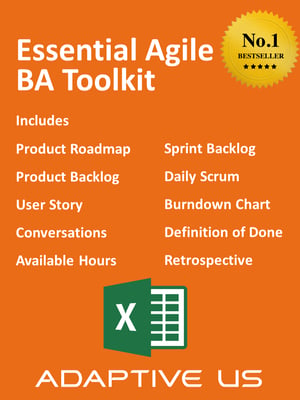Are you a business analyst who finds themselves tasked with managing large-scale R&D projects? If so, you know this role has its fair share of challenges. From securing executive commitment to setting solid communication plans, several factors can make or break the success of these ventures. This blog post will explore the key strategies and insights for successfully navigating these complex projects as a business analyst.
Challenges of Managing Large-Scale R&D Projects as a Business Analyst
Managing large-scale R&D projects as a business analyst can be exhilarating but daunting. One of the biggest challenges lies in these projects' sheer complexity and scope. Unlike smaller initiatives, large-scale ventures involve multiple stakeholders, intricate processes, and extensive resources.
Another challenge is balancing agility with the demands of long-term projects. While agile methodologies offer flexibility and adaptability, they may not always align seamlessly with extended research and development endeavors. Maintaining a delicate balance between delivering iterative results while staying focused on long-term goals requires careful planning and execution.
Securing executive commitment is crucial for successful project management. As a business analyst, you must effectively communicate the potential value these R&D initiatives bring to the organization's growth and innovation strategies. This involves presenting compelling business cases supported by thorough market research, cost-benefit analyses, and projected outcomes.
Setting solid communication plans is essential when dealing with large-scale R&D projects. Effective communication ensures all team members are aligned on project objectives, timelines, tasks, and dependencies. Regular meetings and status updates through email or project management tools foster collaboration among cross-functional teams working on different aspects of the project.
As a business analyst leading such ventures, fully owning the outcome is important. Take ownership of successes and failures throughout each project lifecycle phase. Being accountable for your actions and those within your team or departmental sphere of influence helps build trust with stakeholders.
To drive success in managing large-scale R&D initiatives, effectively empower teams by setting trust at its core element. Team members should feel empowered to make decisions based on their expertise while maintaining transparency regarding progress toward goals. Trust also enables open communication channels where ideas flow freely across departments, fostering innovation. Adaptability is equally important. Research insights may lead to unexpected discoveries that require adjustments in strategy. Adaptability allows quick pivots in response to emerging trends or unforeseen circumstances. These challenges require strategic thinking, effective communication, and strong leadership skills.
Risk of using agile while dealing with extended ventures/projects
For good reason, agile methodology has gained significant popularity in project management. Its iterative and adaptable approach allows teams to respond effectively to changing requirements and deliver valuable products quickly. However, when managing large-scale R&D projects as a business analyst, certain risks involve relying solely on agile methods.
One major risk is the potential lack of predictability. Extended ventures or projects often require long-term planning and forecasting, which can be challenging within an agile framework that prioritizes flexibility over predictability. With multiple stakeholders involved and complex dependencies, it becomes crucial to understand project timelines and milestones clearly.
Another risk is scope creep. Agile encourages continuous feedback and iteration, which can lead to ever-expanding project scopes if not managed properly. This can result in increased costs delayed timelines, and ultimately hinder the overall success of the R&D project.
Furthermore, resource allocation becomes more complex with extended ventures or projects. Agile teams typically work in small cross-functional groups with dedicated team members focused on specific tasks. However, coordination can become a challenge when dealing with larger endeavors involving multiple teams working concurrently on different components or modules.
Additionally, communication gaps may arise due to the distributed nature of agile teams working remotely or across different locations. This can impact collaboration between team members, leading to misunderstandings or delays in decision-making processes.
To mitigate these risks while using agile for large-scale R&D projects as a business analyst:
1) Clearly define project goals upfront: Establishing well-defined objectives helps maintain focus throughout the project lifecycle.
2) Develop a comprehensive plan: While remaining flexible within an agile framework is important for adaptability purposes, having a structured plan will guide critical phases.
3) Implement robust change management practices: Regularly reassess priorities and manage stakeholder expectations through effective communication channels.
4) Leverage appropriate tools: Utilize technology platforms that facilitate seamless collaboration among team members and enable real-time project progress tracking.
Securing executive commitment as a business analyst
Securing executive commitment is crucial to managing large-scale R&D projects as a business analyst. Without the support and buy-in from executives, it can be challenging to drive the project forward and overcome potential obstacles.
To secure executive commitment, it is essential to clearly articulate the project's objectives, benefits, and potential risks. Executives need to understand how the project aligns with the organization's strategic goals and how it will deliver value in the long run. Providing them with comprehensive information backed by data and analysis will help build their confidence in your proposal.
In addition to presenting a compelling case for the project, building relationships with key stakeholders is vital in securing executive commitment. Understanding their priorities, concerns, and expectations will allow you to tailor your approach accordingly. Regularly communicating progress updates and promptly addressing any issues can help maintain their trust throughout the project lifecycle.
Furthermore, demonstrating accountability for outcomes is essential in gaining executive commitment. As a business analyst, taking ownership of delivering results shows that you are committed to positively impacting the organization's success. This level of responsibility helps build credibility, and fosters trust among executives who rely on your expertise.
Securing executive commitment requires effective communication skills and an understanding of organizational dynamics. By articulating clear objectives, building relationships with stakeholders, and taking ownership of outcomes as a business analyst, you can increase your chances of obtaining executive support for large-scale R&D projects.
Setting solid communication plans
Setting solid communication plans is crucial for successfully managing large-scale R&D projects as a business analyst. Effective communication ensures that everyone involved in the project understands their roles, responsibilities, and expectations.
One way to set solid communication plans is by establishing clear communication channels. This includes determining the appropriate tools and platforms for sharing information and updates. Whether through email, project management software, or regular team meetings, having designated channels helps streamline communication and keep everyone on the same page.
Another important aspect of setting solid communication plans is defining the frequency and format of communications. Regular status updates can help stakeholders stay informed about project progress and any potential roadblocks. It's also important to consider different stakeholders' preferences for receiving information – some may prefer detailed reports, while others may prefer concise summaries.
Additionally, open lines of communication should be encouraged throughout the project duration. Encouraging team members to ask questions, seek clarification, or raise concerns fosters an environment where issues can be addressed promptly.
Furthermore, documenting decisions made during meetings or discussions is essential to avoid misunderstandings later on. Providing meeting minutes or action items helps ensure that everyone clearly understands what was discussed and agreed upon.
Setting solid communication plans is vital for successfully managing large-scale R&D projects as a business analyst. By establishing clear channels of communication, defining frequency and format, encouraging open dialogue within teams, and documenting decisions made along the way, you can promote effective collaboration among all stakeholders involved in the project
Owning the outcome
Owning the outcome is critical to successfully managing large-scale R&D projects as a business analyst. It means taking full responsibility for the results and ensuring the project meets its objectives. This requires a proactive approach, where you are actively involved in every project stage.
To own the outcome, you must clearly understand the project goals and deliverables. You need to establish key performance indicators (KPIs) to measure success and ensure all team members align with these metrics.
As a business analyst, taking ownership of any challenges or obstacles that arise during the project is important. Instead of passing blame or making excuses, focus on finding solutions and driving progress forward.
One way to demonstrate ownership is by actively seeking stakeholder feedback and incorporating their input into your decision-making process. This shows that you value their opinions and are committed to delivering outcomes that meet their needs.
Another aspect of owning the outcome is being accountable for budget management. As a business analyst, monitoring costs closely and identifying areas where efficiencies can be achieved without compromising quality or scope is essential.
In addition, effective risk management plays a crucial role in owning the outcome. Anticipate potential risks early on and develop contingency plans to mitigate them. Regularly assess progress against milestones and adjust strategies accordingly.
By taking ownership of your work as a business analyst, you inspire confidence among stakeholders and create an environment where accountability thrives. This leads to successful outcomes for large-scale R&D projects.
Empower teams by setting trust, transparency, and adaptability in the workplace
Empowering teams is crucial for successfully managing large-scale R&D projects as a business analyst. By fostering an environment built on trust, transparency, and adaptability, you can create a strong foundation for collaboration and productivity.
Trust is the cornerstone of any high-performing team. As a business analyst, building trust by demonstrating competence, reliability, and integrity in your work is essential. Encourage open communication and create opportunities for team members to share their ideas and concerns without fear of judgment or reprisal.
Transparency plays a vital role in keeping everyone on the same page. Share project updates regularly, including progress reports, challenges faced, and upcoming milestones. This level of transparency fosters accountability among team members and allows them to understand how their contributions fit into the bigger picture.
Adaptability is key when managing large-scale R&D projects, often involving evolving requirements or unforeseen obstacles. Encourage your team to embrace change by promoting flexibility in processes and encouraging continuous learning. Be open to feedback from all stakeholders involved so that adjustments can be made quickly and effectively.
By setting trust, transparency, and adaptability as core values within your workplace culture, you empower teams to take ownership of their work while feeling supported by their colleagues. This leads to improved motivation levels and enhanced problem-solving capabilities.
In conclusion, empowering teams through trust, transparency, and adaptability creates an environment conducive to success in managing large-scale R&D projects. As a business analyst, fostering these qualities within your team to promote collaboration and achieve desired outcomes is important. Remember, trust builds strong foundations, transparency keeps everyone informed, and adaptability ensures agility. With these elements in place, your team will thrive in tackling complex challenges and delivering exceptional results
Conclusion
Successful management of large-scale R&D projects as a business analyst requires embracing agility while mitigating risks associated with extended ventures. Securing executive commitment ensures adequate resources are available throughout the project lifecycle while setting clear communication plans keeps stakeholders informed at every stage. Owning outcomes means actively participating in decision-making processes and collaborating closely with cross-functional teams. Empowering teams through trust fosters creativity and innovation, leading to successful project outcomes.
You May Also Like
These Related Stories

Extended CRUD Matrix - 10 Must-Know Data Operations for Business Analysts

Best ECBA Training Providers in Canada in 2024




No Comments Yet
Let us know what you think